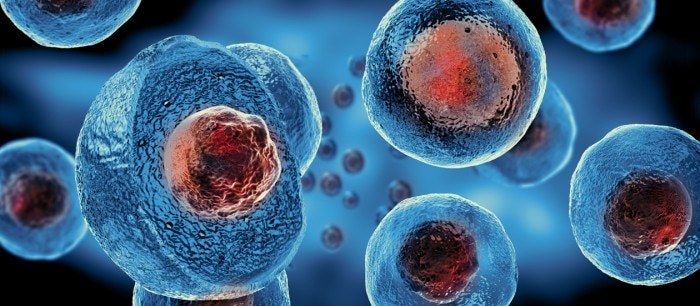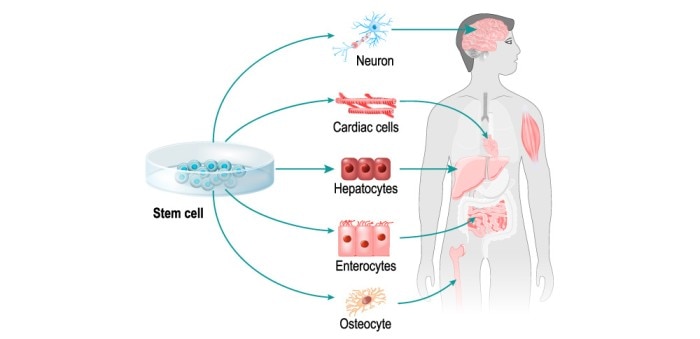MENU
MY | MYR
MY | MYR
-
- Benchtop Centrifuges
- Floor-Standing Centrifuges
- Refrigerated Centrifuges
- Microcentrifuges
- Multipurpose Centrifuges
- High-Speed Centrifuges
- Ultracentrifuges
- Concentrator
- High-Speed and Ultracentrifuge Consumables
- Centrifuge Tubes
- Centrifuge Plates
- Device Management Software
- Sample and Information Management
You are about to leave this site.
Please be aware that your current cart is not saved yet and cannot be restored on the new site nor when you come back. If you want to save your cart please login in into your account.
No results found
Search Suggestions

Stem Cells - Introduction
Lab Academy
- Bioprocessing
- Cell Biology
- Cell Culture
- Stem Cells
- CO2 Incubators
- Bioprocess
- Cell Culture Consumables
- Essay
Why stem cells?
Researchers use stem cells for their rapid, sustained proliferation and their ability to differentiate into functional mature cell types. This combination of expansion followed by specialization reflects the natural development of tissues and organs. It means that stem cells can provide a suitable model for studying both natural tissue development and disease.Read more
Read less

Image source: Designua/Shutterstock.com
Aside from their use in research, stem cells also have the potential for use in the clinic, offering treatment by replacing or supporting damaged tissues. Transplanting adult hematopoietic stem cells is already common practice in many countries around the world and is highly successful in, for example, cancer treatment. Trials of other types of stem cells are underway for conditions such as Crohn's disease, age-related macular degeneration and heart disease.
The composition of the culture medium is a key parameter for maintaining a stem cell-like state. However, the surface that the cells grow on and the atmospheric composition also play critical roles. Compared to mature cells, stem cells are more sensitive to each of these factors, forming an important cause for lack of reproducibility as partially differentiated cells behave differently to true stem cells.
Many types of stem cells do not retain their phenotype when grown on conventional tissue culture plastic; specialized growth surfaces (such as feeder cells, extracellular matrix coatings or specialized synthetic growth surfaces) may be required. These surfaces help to maintain the stem cell phenotype through their shape, texture or chemical properties.
All cells need elevated concentrations of CO2 to grow and divide, but frequent fluctuations in atmospheric composition affect stem cells significantly, leading to less reproducible results. Furthermore, many stem cell experiments need to take place under hypoxic conditions, requiring specialized incubators and additional gas control. Most stem cells also require daily handling, posing challenges for maintaining a constant atmospheric composition and preventing contamination . Researchers need to take all these challenges into account when starting out in the world of stem cell biology.
Bioreactor culture is a common method for producing the cell numbers required for these types of large-scale applications. Culture systems, such as microcarriers suspended in a spinner flask, provide a high surface area for cell growth combined with sufficient access to oxygen and nutrients. This approach can ensure consistency in scaling up stem cell culture.
Tackling the challenges of stem cell culture
Efficient and reliable stem cell culture also means having to deal with the challenges of stem cells. Expanding stem cell cultures in vitro requires tightly defined conditions to make sure they retain their stem cell-like state . Changes to the phenotype of stem cells can sometimes be detected by their visual appearance; however, there are also more sophisticated techniques that can be used to confirm stem cell identity .The composition of the culture medium is a key parameter for maintaining a stem cell-like state. However, the surface that the cells grow on and the atmospheric composition also play critical roles. Compared to mature cells, stem cells are more sensitive to each of these factors, forming an important cause for lack of reproducibility as partially differentiated cells behave differently to true stem cells.
Many types of stem cells do not retain their phenotype when grown on conventional tissue culture plastic; specialized growth surfaces (such as feeder cells, extracellular matrix coatings or specialized synthetic growth surfaces) may be required. These surfaces help to maintain the stem cell phenotype through their shape, texture or chemical properties.
All cells need elevated concentrations of CO2 to grow and divide, but frequent fluctuations in atmospheric composition affect stem cells significantly, leading to less reproducible results. Furthermore, many stem cell experiments need to take place under hypoxic conditions, requiring specialized incubators and additional gas control. Most stem cells also require daily handling, posing challenges for maintaining a constant atmospheric composition and preventing contamination . Researchers need to take all these challenges into account when starting out in the world of stem cell biology.
Upscaling
The behavior of stem cells, like many other cell types, depends on the cells around them. Especially in clinical applications and studies involving large in vitro constructs, it is not possible to produce suitable constructs using small-scale 2D culture. In these cases, researchers can turn to 3D organoid culture to study complex behaviors and create constructs not achievable with 2D culture. This requires significant upscaling.Bioreactor culture is a common method for producing the cell numbers required for these types of large-scale applications. Culture systems, such as microcarriers suspended in a spinner flask, provide a high surface area for cell growth combined with sufficient access to oxygen and nutrients. This approach can ensure consistency in scaling up stem cell culture.
Read more
Read less
References
1.) Cyranoski D. 'Reprogrammed' stem cells approved to mend human hearts for the first time. Nature 2018;557: 619–620.
2.) Mendai M et al. Autologous Induced Stem-Cell–Derived Retinal Cells for Macular Degeneration. New England Journal of Medicine 2017;376: 1038–1046.
3.) Sheridan C. Cardiac stem cell therapies inch toward clinical litmus test. Nature Biotechnology 2018;31: 5–6.
1.) Cyranoski D. 'Reprogrammed' stem cells approved to mend human hearts for the first time. Nature 2018;557: 619–620.
2.) Mendai M et al. Autologous Induced Stem-Cell–Derived Retinal Cells for Macular Degeneration. New England Journal of Medicine 2017;376: 1038–1046.
3.) Sheridan C. Cardiac stem cell therapies inch toward clinical litmus test. Nature Biotechnology 2018;31: 5–6.
Read more
Read less
Related links
Read more
Read less
